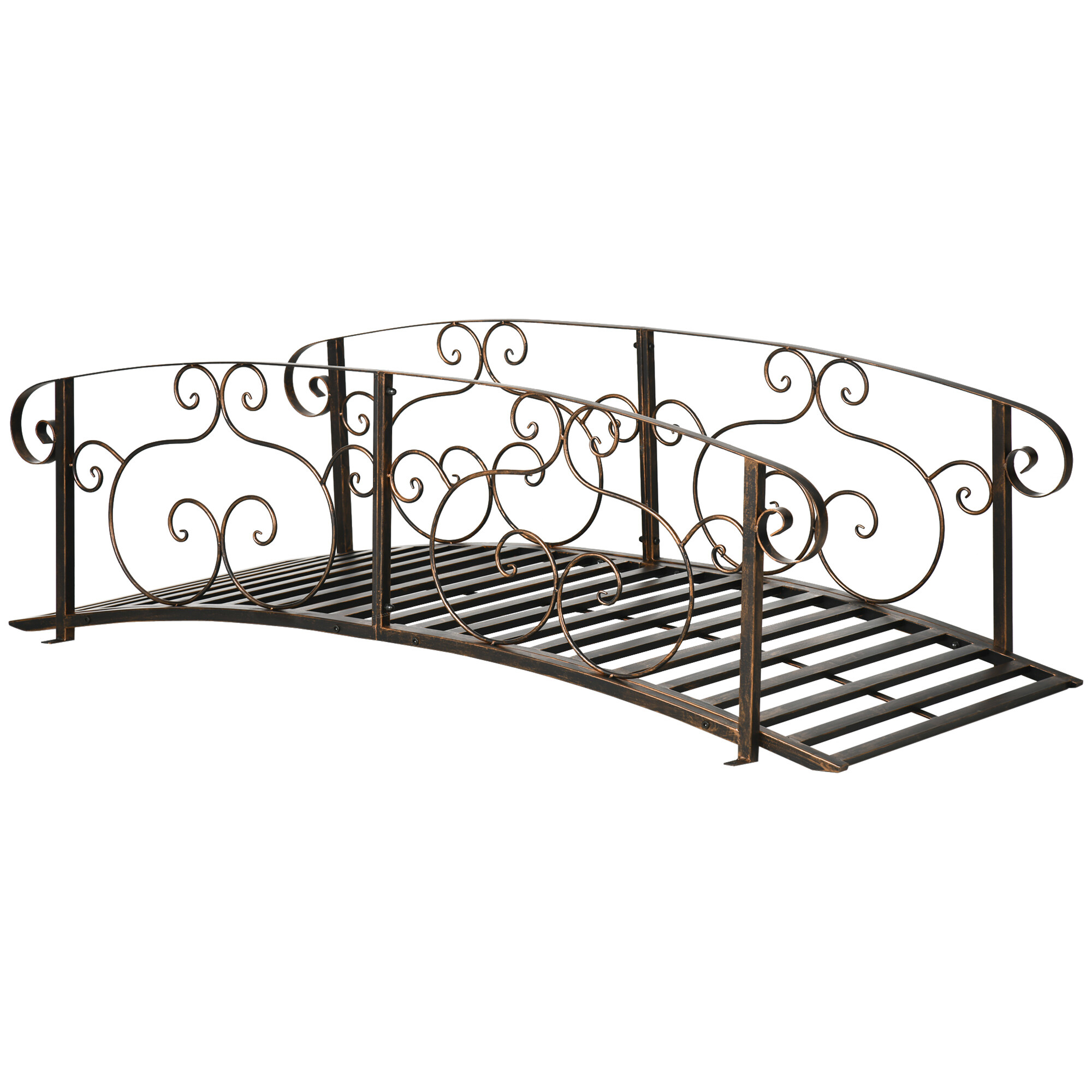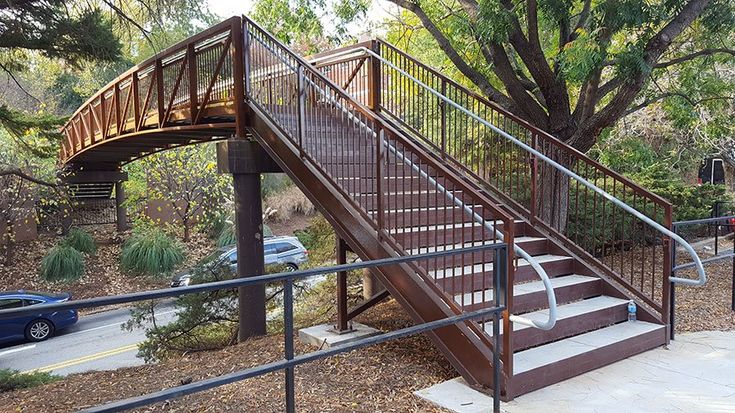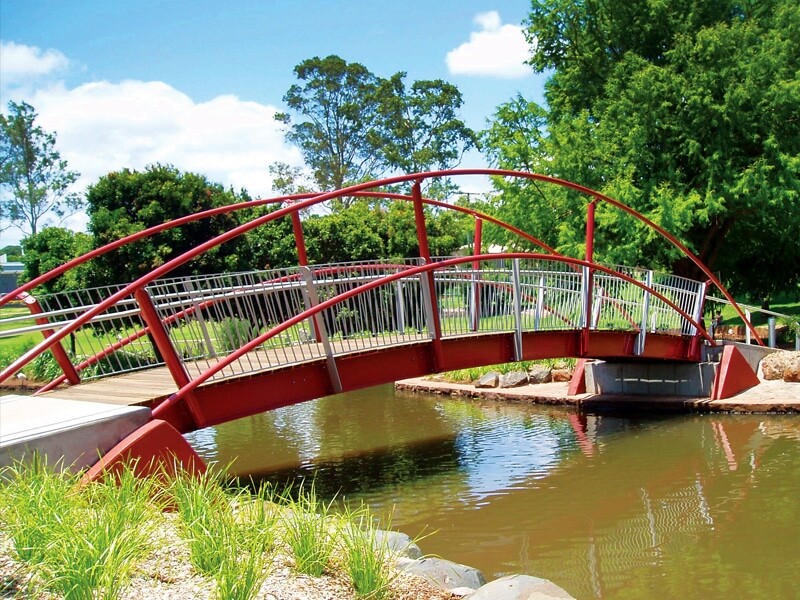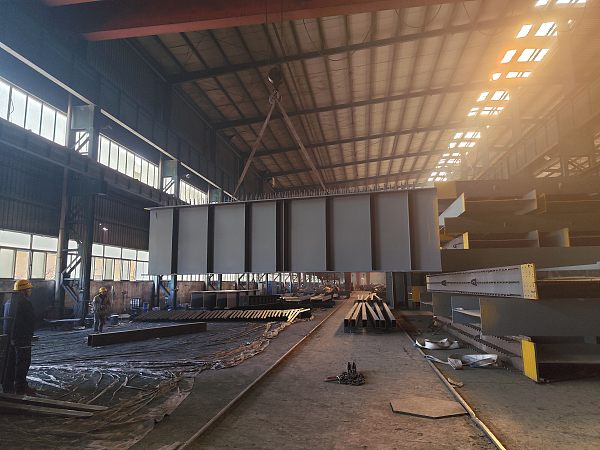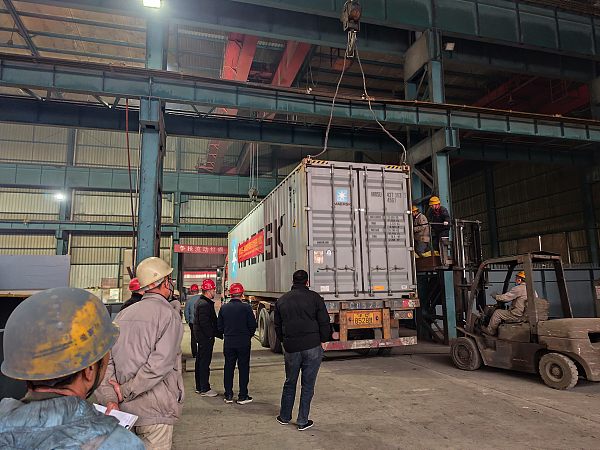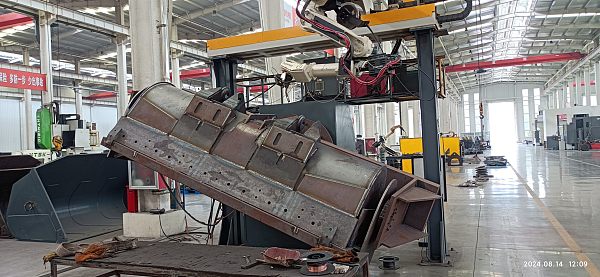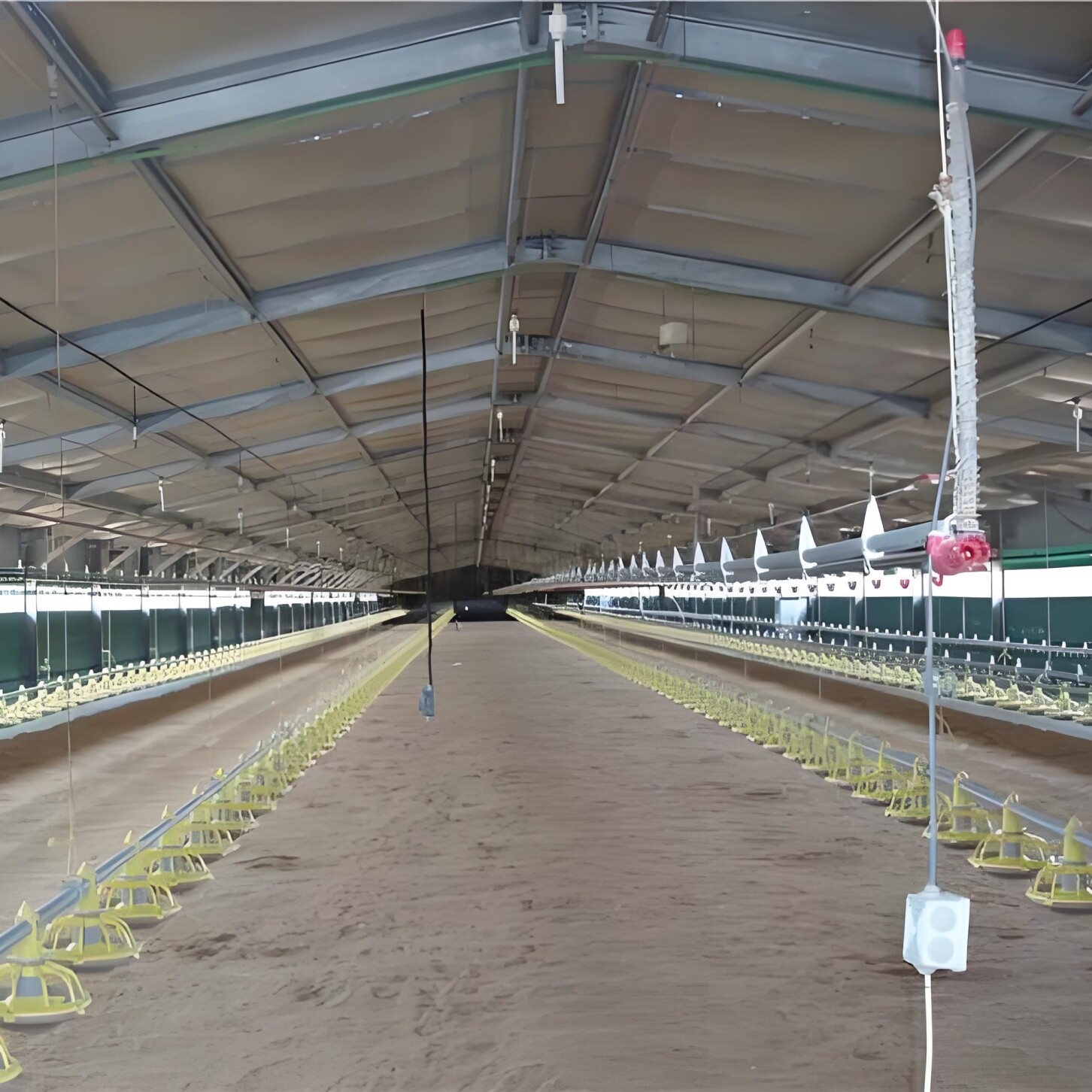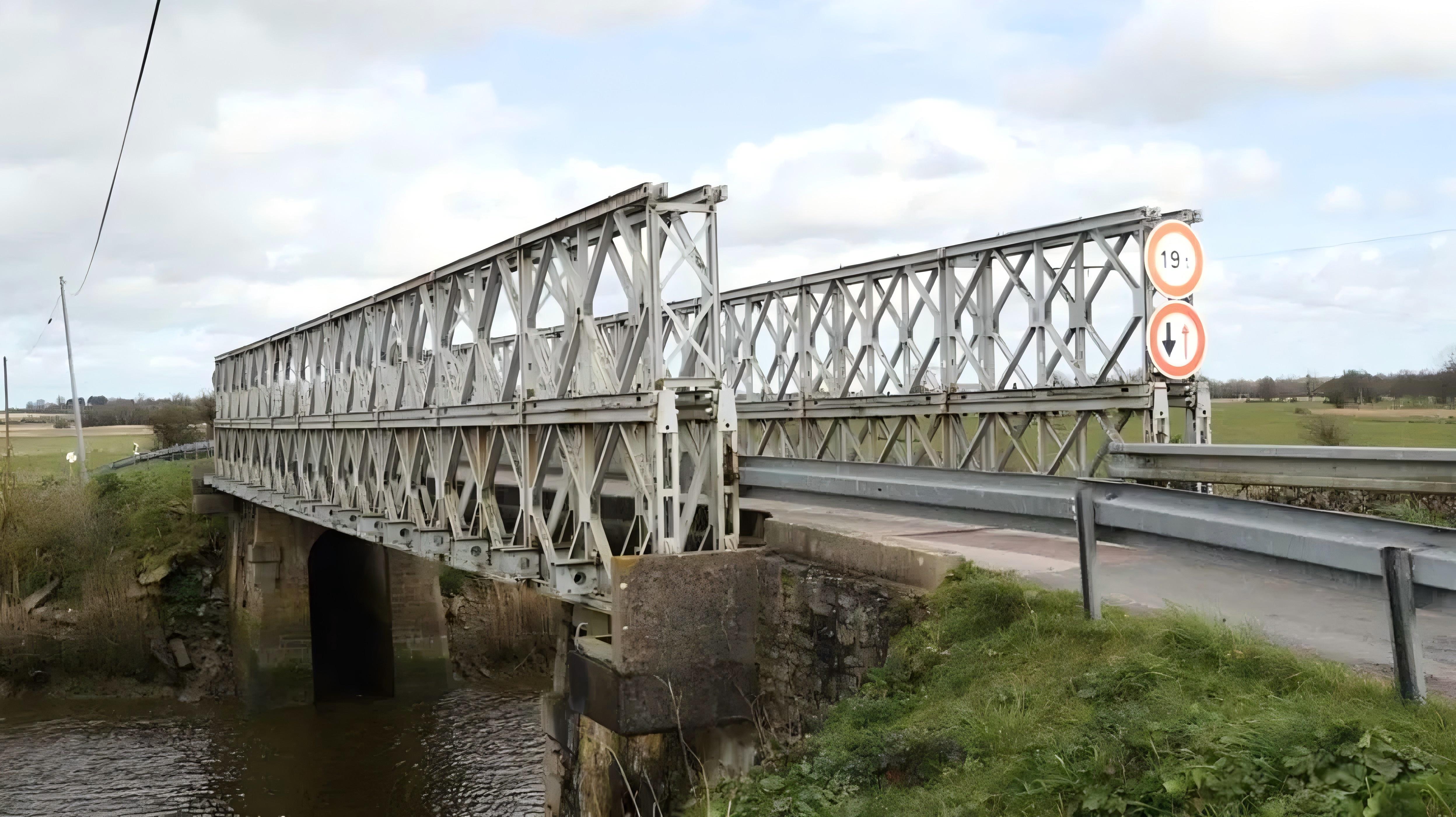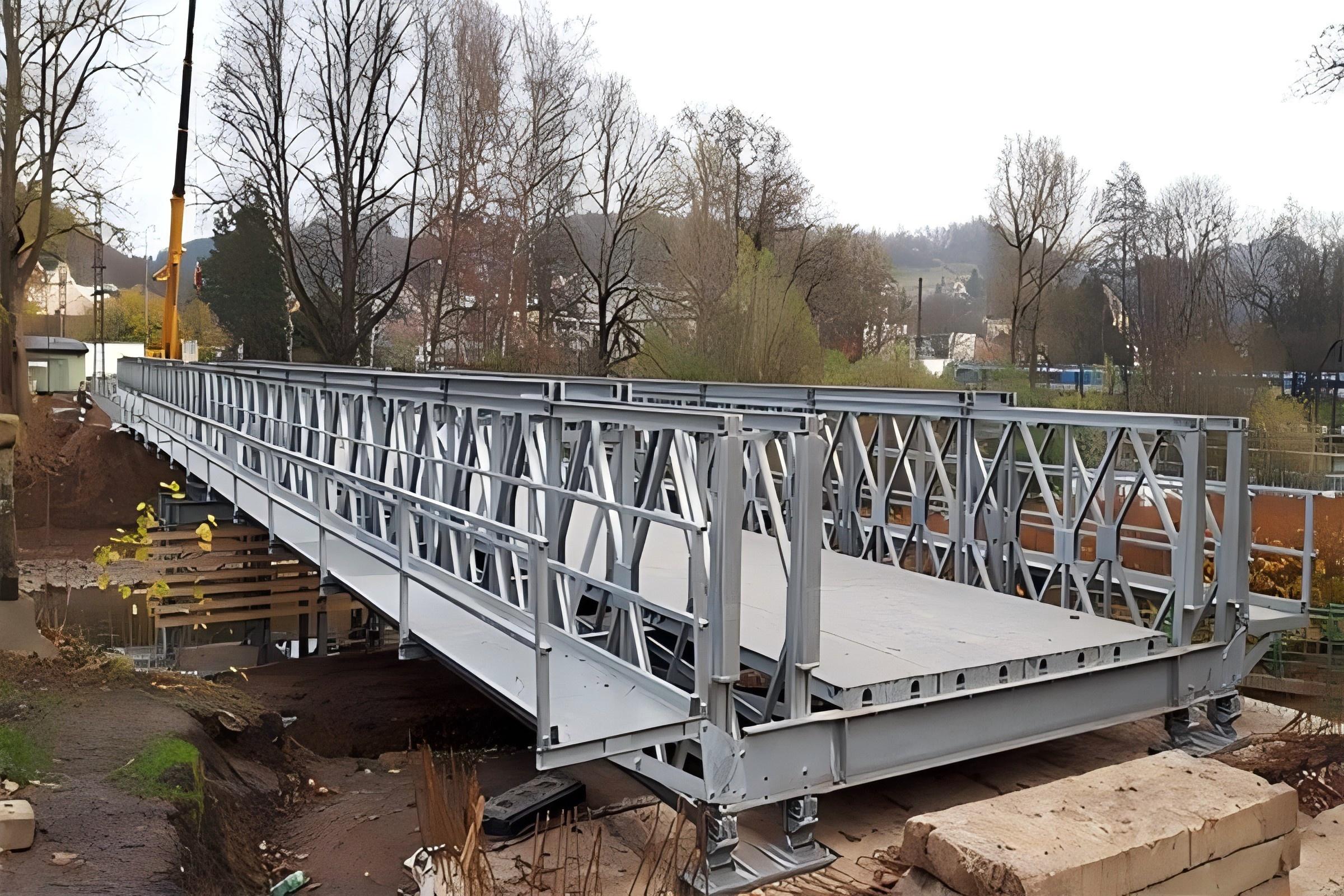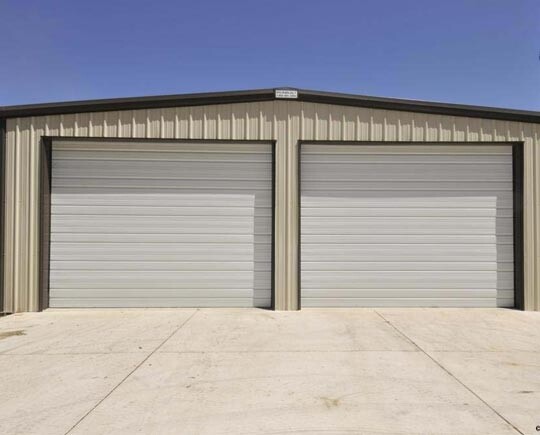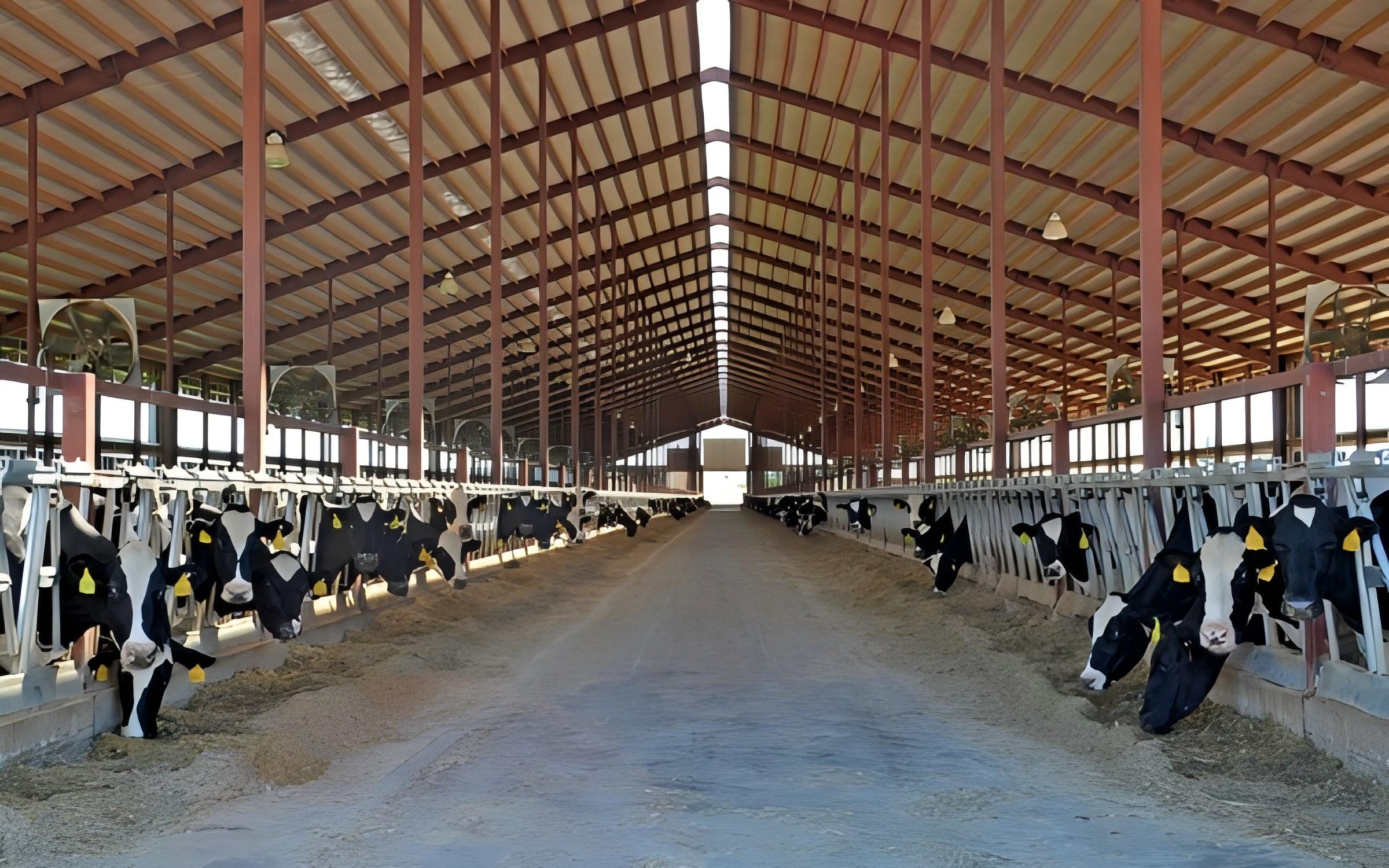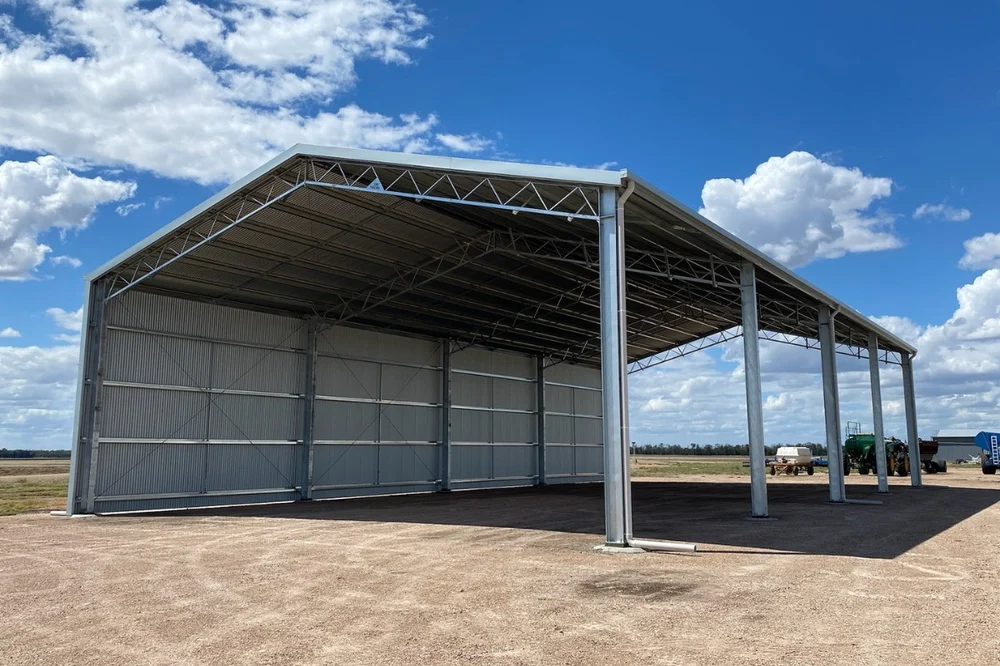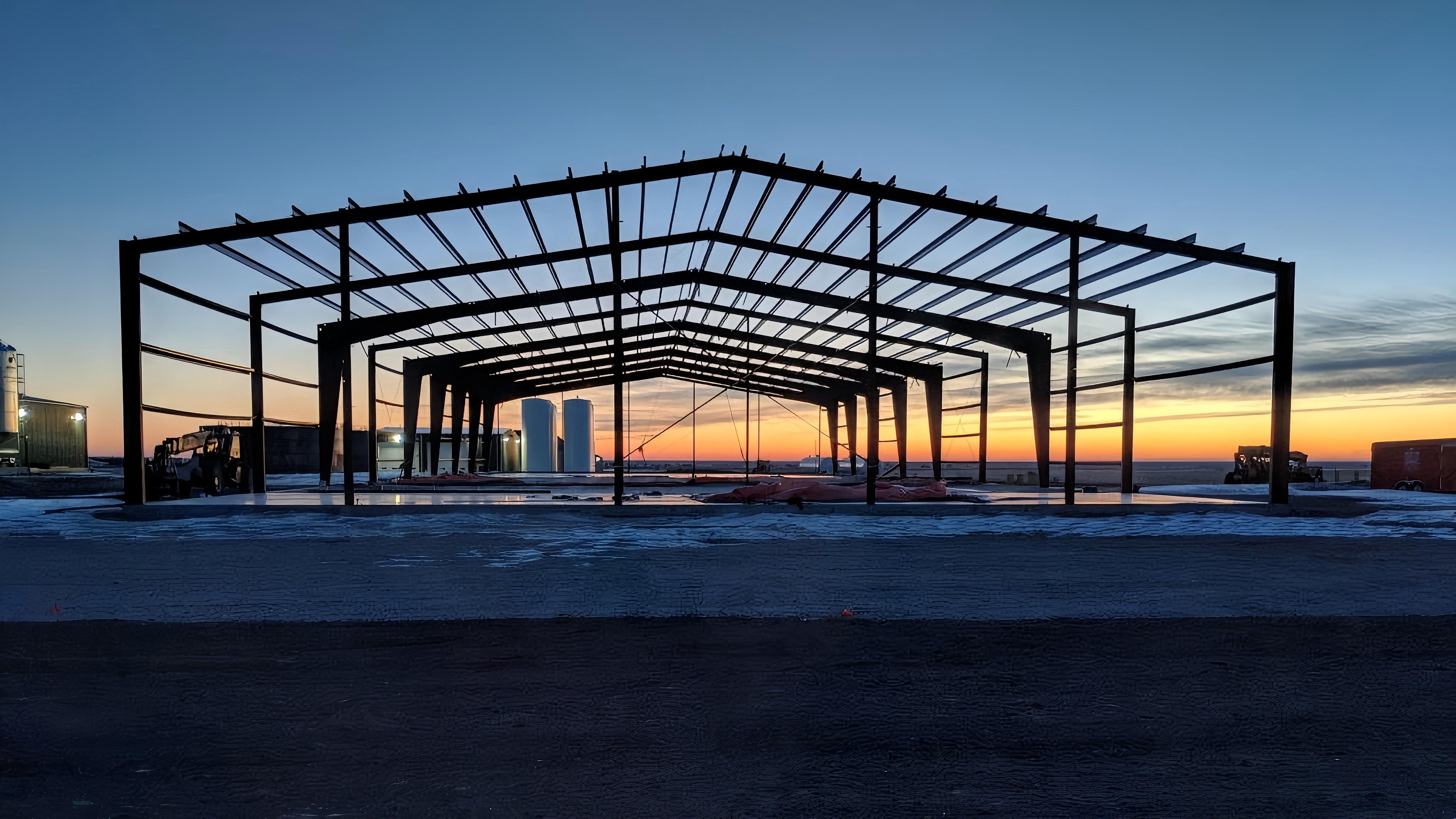- PRODUCT CENTER -
Leave A Message
Product Parameters
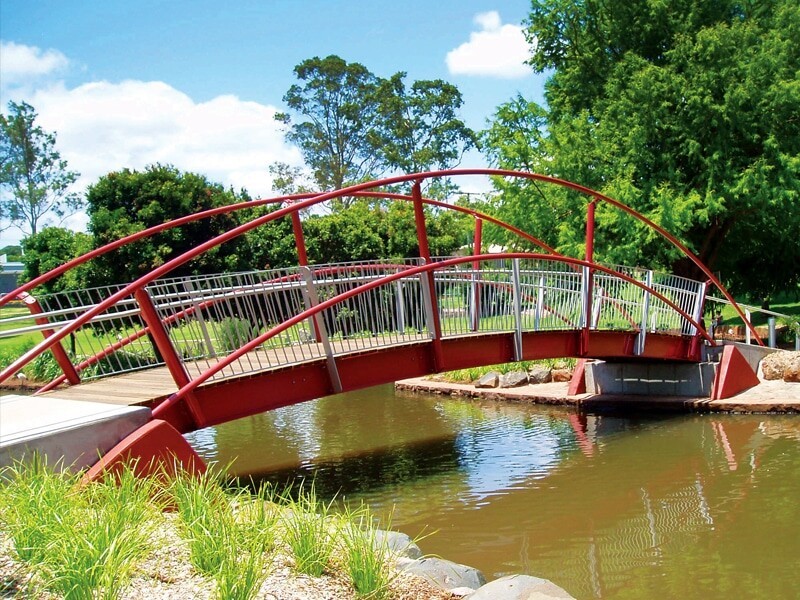
Prefabricated Steel Portable Footbridges for Sidewalks and Pedestrian Use: A Comprehensive Guide
1. Introduction
Prefabricated steel portable footbridges are essential structures designed to provide safe, durable, and quickly deployable pedestrian crossings over obstacles such as roads, rivers, construction sites, and uneven terrain. These bridges are widely used in urban infrastructure, parks, disaster zones, and temporary event pathways due to their modularity, strength, and ease of installation.
This guide explores:
✔ Design and structural features of steel pedestrian footbridges.
✔ Materials and fabrication methods for durability.
✔ Applications in urban and remote settings.
✔ Installation, safety, and maintenance considerations.
✔ Comparison with alternative materials (wood, aluminum, concrete).
2. Design and Structural Features
2.1 Modular Prefabrication
Made in factory-assembled sections for rapid on-site installation.
Standard lengths: 10 ft to 40 ft (expandable with connectors).
Widths: 4 ft (single lane) to 8 ft (wheelchair-accessible).
2.2 Load-Bearing Capacity
Designed for pedestrian traffic (5+ people at once).
Handles bicycles, wheelchairs, and light utility vehicles (if reinforced).
Safety factor: 3x expected load (e.g., 1,500 lbs capacity for 500 lbs design load).
2.3 Decking Options
Steel grating (anti-slip, allows water drainage).
Solid steel plates (for smoother walking surface).
Composite decking (steel frame with fiberglass or wood overlay).
2.4 Handrails and Safety Features
Standard height: 42–48 inches (meets OSHA/ADA compliance).
Materials: Steel tubing, mesh panels, or cable railings.
Anti-slip coatings for wet conditions.
2.5 Portability and Adjustability
Lightweight (compared to concrete bridges).
Bolted connections for easy disassembly and relocation.
Adjustable legs or foundations for uneven terrain.
3. Materials and Fabrication
3.1 Steel Types Used
Galvanized steel: Corrosion-resistant, ideal for outdoor use.
Stainless steel: Higher cost but maintenance-free in harsh environments.
Powder-coated steel: Custom colors, extra weather protection.
3.2 Manufacturing Process
Laser/plasma cutting for precision parts.
Welding and assembly of trusses and railings.
Surface treatment (galvanizing, painting, or powder coating).
Quality testing (load-bearing, stress tests).
3.3 Advantages Over Other Materials
4. Applications of Portable Steel Footbridges
4.1 Urban Infrastructure
Sidewalk expansions over busy roads.
Construction detours for pedestrian safety.
Bicycle and pedestrian greenways.
4.2 Parks and Recreational Use
Trail bridges in nature reserves.
Boardwalks over wetlands.
Event footbridges (festivals, stadiums).
4.3 Emergency and Disaster Relief
Temporary crossings after floods/earthquakes.
Refugee camp pathways.
Military and humanitarian aid deployments.
4.4 Industrial and Private Use
Factory walkways.
Private estate bridges.
Roof terrace connectors.
5. Installation and Maintenance
5.1 Installation Process
Site preparation (leveling, foundation pads if needed).
Modular assembly (bolt-together sections).
Anchoring (ground spikes, concrete footings, or rubber pads).
Safety inspection (railings, stability, slip resistance).
5.2 Maintenance Requirements
Annual inspection for rust, loose bolts, or deck wear.
Cleaning (pressure wash grates, remove debris).
Touch-up painting if coating deteriorates.
5.3 Expected Lifespan
30–50 years with proper maintenance.
Shorter in coastal/salty environments unless stainless steel is used.
6. Safety and Regulatory Compliance
6.1 Key Standards
ADA (Americans with Disabilities Act): Slope <5%, proper handrails.
OSHA (Workplace Safety): Non-slip surfaces, guardrails.
EN 1090 (Europe): Structural welding certifications.
6.2 Common Safety Features
Non-slip treads on steps and decking.
Kick plates to prevent tripping.
Reflective strips for nighttime visibility.
7. Cost and Purchasing Considerations
7.1 Price Range
Basic models: 10,000 (small prefab units).
Custom designs: 50,000+ (long spans, special coatings).
7.2 Where to Buy
Industrial suppliers (Alibaba, Bridge Brothers).
Specialty manufacturers (Zaneen, Acrow Bridges).
Local steel fabricators (custom orders).
8. Conclusion: Why Choose a Steel Portable Footbridge?
✔ Quick installation (hours vs. weeks for concrete).
✔ Relocatable and reusable (ideal for temporary needs).
✔ Stronger and longer-lasting than wood/aluminum.
✔ Low maintenance compared to alternatives.
Whether for city sidewalks, parks, or disaster zones, prefabricated steel footbridges offer a reliable, cost-effective, and safe solution for pedestrian mobility.
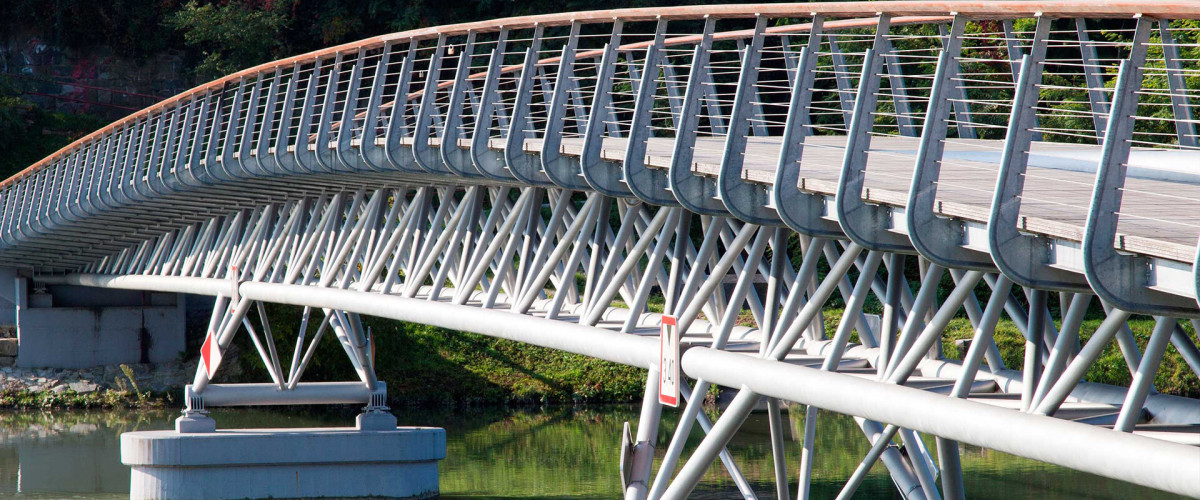
Prefabricated Steel Portable Footbridges:
A Comprehensive Technical Summary
1. Introduction to Prefabricated Steel Portable Footbridges
Prefabricated steel portable footbridges represent an innovative solution for pedestrian mobility across various terrains and obstacles. These modular structures combine the strength of steel with the convenience of prefabrication to create temporary or semi-permanent crossings that can be rapidly deployed in urban, rural, and emergency scenarios. Unlike traditional fixed bridges, these systems offer unparalleled flexibility, allowing for quick installation, reconfiguration, and relocation as needs change.
The global market for these bridges has grown significantly due to increasing infrastructure development, urbanization pressures, and the need for disaster-resilient structures. Modern prefabricated steel footbridges now incorporate advanced engineering principles, corrosion-resistant materials, and user-friendly designs that meet stringent safety standards while maintaining cost-effectiveness.
2. Design Principles and Structural Characteristics
2.1 Modular Design Philosophy
The core innovation of prefabricated steel footbridges lies in their modular construction. Standardized components are manufactured off-site to precise tolerances, enabling:
Interchangeable parts that can be mixed and matched
Scalable length configurations (typically 3m to 50m spans)
Adjustable width options (1.2m for basic pedestrian use up to 3m for wheelchair access)
Variable load capacities (from 5kN/m² for foot traffic to 20kN/m² for emergency vehicles)
2.2 Structural Components
A complete system consists of several key elements:
Main longitudinal girders: Usually fabricated from high-strength steel I-beams or trusses
Cross beams: Spaced at regular intervals to support the deck
Decking systems: Options include:
Open steel grating (excellent drainage, 30-50% open area)
Solid steel plate (better for small wheels and high heels)
Composite panels (steel frame with fiberglass or timber infill)
Handrail systems: Typically 1.1m high with mid-rails, meeting OSHA/EN standards
Connection systems: Bolted, pinned, or clamped joints for rapid assembly
2.3 Advanced Engineering Features
Contemporary designs incorporate:
Anti-vibration dampers for pedestrian comfort
Non-slip surface treatments (epoxy coatings, grit inserts)
Corrosion protection systems (hot-dip galvanizing, metallized coatings)
Seismic-resistant connections in earthquake-prone areas
Thermal expansion joints for temperature variation tolerance
3. Material Selection and Manufacturing Processes
3.1 Steel Grades and Treatments
Manufacturers typically use:
S355J2+N structural steel (yield strength 355 MPa)
Weathering steel (Corten-type) for natural corrosion resistance
Stainless steel (Grade 316) for marine environments
High-strength low-alloy (HSLA) steels for weight reduction
Surface treatments include:
Hot-dip galvanizing (85μm coating for 25+ year life)
Thermal spray aluminum for extreme environments
Multi-layer paint systems (epoxy + polyurethane)
3.2 Precision Manufacturing Techniques
Modern fabrication employs:
CNC plasma/laser cutting (±0.5mm tolerance)
Robotic welding (MIG/MAG processes)
Jig-based assembly ensuring component interchangeability
Automated quality control (ultrasonic testing, 3D scanning)
3.3 Quality Assurance Protocols
ISO 3834 welding quality certification
EN 1090 execution class requirements
Non-destructive testing (MPI, DPI, UT)
Load testing (150% design load verification)
4. Installation Methodologies
4.1 Foundation Systems
Various options accommodate different site conditions:
Ground-bearing pads (for firm soils)
Micro-pile foundations (soft/unstable ground)
Existing structure attachments (bridge ends to buildings)
Floating pontoons (water crossings)
4.2 Erection Procedures
Typical installation sequence:
Site survey and foundation preparation
Delivery of modular components (flat-pack or pre-assembled sections)
Sequential assembly using:
Light cranes (for heavy components)
Manual handling (for smaller bridges)
Specialized erection frames
Final alignment and tensioning
Safety system installation (handrails, lighting)
4.3 Installation Timeframes
Comparative installation durations:
10m span: 4-8 hours with 4-person crew
30m span: 1-2 days with small crane
50m complex span: 3-5 days with full team
5. Performance Characteristics and Testing
5.1 Structural Performance Metrics
Deflection limits: L/360 under live load
Natural frequency: >3Hz to avoid pedestrian-induced vibrations
Fatigue life: 1 million cycles at design load
Wind resistance: Up to 45m/s (category 2 hurricane)
5.2 Environmental Resilience
Temperature range: -40°C to +60°C operation
Corrosion resistance: C5-M classification (severe marine)
UV stability: 10+ years without coating degradation
Flood resistance: Designed for temporary submersion
5.3 Safety Compliance
Meets or exceeds:
EN 1991-2 (Eurocode for pedestrian loads)
ADA/ANSI A117.1 (accessibility standards)
ISO 14122 (safety of machinery)
Local bridge design codes
6. Applications and Use Cases
6.1 Urban Infrastructure
Construction site pedestrian diversions
Temporary crossings during bridge repairs
Event access bridges (stadiums, festivals)
Rapid deployment for utility works
6.2 Emergency and Disaster Response
Post-earthquake route restoration
Flood-damaged crossing replacement
Refugee camp access solutions
Military tactical bridging
6.3 Recreational and Tourism
Nature trail boardwalks
Eco-tourism canopy walks
Seasonal event installations
Park and garden decorative crossings
6.4 Industrial Applications
Plant access walkways
Mining site personnel bridges
Offshore platform connections
Railway station footbridges
7. Maintenance and Lifecycle Considerations
7.1 Routine Maintenance Requirements
Annual visual inspections
Biannual bolt tension checks
5-year comprehensive structural survey
Deck surface renewal every 8-10 years
7.2 Expected Service Life
Design life: 25-30 years
Actual service life: 40+ years with proper maintenance
Refurbishment cycles: Major components at 15-year intervals
7.3 End-of-Life Options
Complete disassembly and relocation
Material recycling (98% steel recoverability)
Adaptive reuse for lighter-duty applications
8. Economic and Sustainability Benefits
8.1 Cost Comparison
Initial cost: 3,000/m² installed
Lifecycle cost: 30-40% lower than concrete alternatives
Savings from:
Reduced installation time
Minimal foundation requirements
Reusability across multiple projects
8.2 Environmental Advantages
Embodied carbon: 60% less than concrete equivalents
Recycled content: 30-80% post-industrial scrap
Site disturbance: Minimal footprint
Reusability: 5-10 redeployments possible
8.3 Social Value
Rapid restoration of pedestrian access
Improved community connectivity
Enhanced safety over temporary solutions
ADA-compliant accessibility
9. Market Trends and Future Developments
9.1 Technological Advancements
Smart bridge systems with IoT sensors
Self-erecting mechanisms using robotics
Advanced composites for hybrid structures
Photovoltaic integrated decking
9.2 Evolving Design Standards
Improved seismic resilience requirements
Enhanced crowd-loading models
Stricter accessibility guidelines
Climate-adaptive designs
9.3 Growing Application Sectors
Rapid urbanization in developing nations
Climate change adaptation infrastructure
Temporary military/civilian hybrid use
Modular city concepts
10. Conclusion: The Future of Pedestrian Mobility
Prefabricated steel portable footbridges have evolved from simple temporary structures to sophisticated engineered systems that address critical infrastructure needs. Their combination of strength, adaptability, and rapid deployment capability makes them indispensable for:
Urban planners managing growing cities
Emergency responders facing disaster scenarios
Infrastructure managers maintaining continuous access
Event organizers creating temporary venues
As material science advances and digital technologies integrate with traditional bridge engineering, these systems will become even more capable, sustainable, and cost-effective. The future points toward:
Autonomous deployment systems
Self-monitoring smart bridges
Circular economy manufacturing
Universal design standardization
For any organization needing reliable, high-performance pedestrian crossing solutions, prefabricated steel portable footbridges offer the optimal balance of technical performance, economic efficiency, and future-ready design.
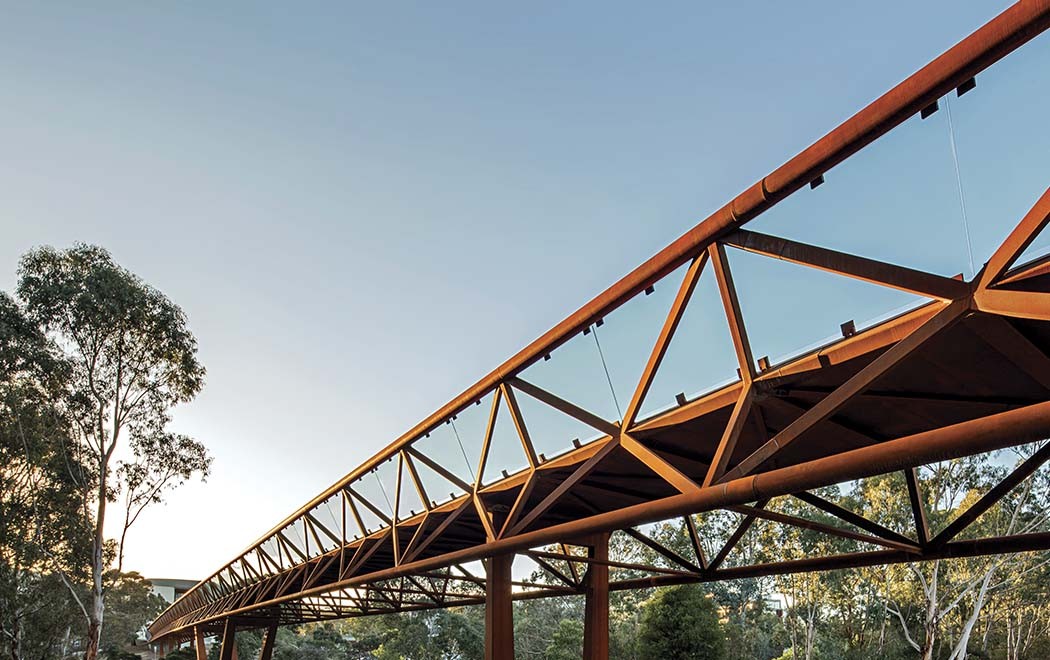
Xingya Steel Structure: Revolutionizing Mobility with Premium Prefabricated Steel Portable Bridges
Superior Engineering for Seamless Connectivity
In today’s fast-paced world, infrastructure demands reliability, speed, and durability—qualities that Xingya Steel Structure delivers with our high-performance prefabricated steel portable bridges. Designed for pedestrian, vehicle, and emergency use, our bridges combine premium materials, precision engineering, and unmatched craftsmanship to provide safe, long-lasting, and cost-effective crossing solutions.
Whether you need temporary construction access, disaster relief bridges, or permanent modular installations, Xingya bridges are engineered to exceed expectations.
Why Choose Xingya Prefabricated Steel Portable Bridges?
1. Premium-Quality Materials for Unmatched Strength
We use only the finest steel grades, ensuring maximum durability:
High-strength structural steel (Q355B, ASTM A572) – Resists heavy loads and harsh weather.
Hot-dip galvanized coating – Prevents rust and corrosion, even in marine environments.
Powder-coated finishes – Customizable colors for aesthetic appeal and extra protection.
✅ Built to last 30+ years with minimal maintenance.
2. Precision Engineering & Fine Welding Work
Every Xingya bridge is crafted with expert welding and meticulous design:
Robotic & manual welding for flawless structural integrity.
CNC-cut components ensuring perfect fit and fast assembly.
Modular bolt-together system – No welding on-site, saving time and labor costs.
✅ Smooth, safe, and wobble-free performance under load.
3. Durable & Long-Lasting Performance
Our bridges are tested for extreme conditions:
Heavy load capacity (pedestrian, bicycles, even light vehicles).
Weather-resistant (–30°C to +60°C operation).
Anti-slip decking for safety in rain, snow, and ice.
✅ Reliable in floods, earthquakes, and harsh industrial environments.
4. Excellent Service & Custom Solutions
We don’t just sell bridges—we partner with you for success:
Custom designs tailored to your project needs.
Fast production & global shipping.
On-site installation support if required.
After-sales service & maintenance guidance.
✅ Your bridge solution, from concept to completion.
Applications: Where Xingya Bridges Excel
✔ Construction & Infrastructure
Temporary pedestrian crossings during roadwork.
Site access bridges for workers and equipment.
✔ Emergency & Disaster Relief
Rapid-deployment bridges after floods or earthquakes.
Military and humanitarian aid logistics.
✔ Urban & Recreational Use
Park footbridges, boardwalks, and eco-trails.
Event and festival walkways.
✔ Industrial & Mining
Safe crossings over pipelines, trenches, and rail tracks.
Modular access bridges for factories and plants.
Xingya vs. Traditional Bridges: Why Steel Prefab Wins
Join Global Clients Who Trust Xingya
From government infrastructure projects to private sector developments, Xingya bridges have been deployed in:
Southeast Asia – Flood-resistant emergency crossings
Middle East – Construction site access bridges
Africa – Rural pedestrian connectivity solutions
Europe & Americas – Eco-friendly park walkways
"Xingya’s steel footbridges helped us restore connectivity after a typhoon in just two days—durable, quick to install, and reliable."
– Disaster Response Team, Philippines
Get Your Custom Bridge Solution Today!
???? Fast production – Lead times as short as 2-4 weeks.
???? Competitive pricing – High value without compromising quality.
???? Global logistics – We ship and support worldwide.
???? Contact us now for a free consultation!
Xingya Steel Structure – Building Bridges That Last.
Packaging and Transportation
Instruments and Equipment
FAQ
Q: How can I get a quote for my project?
Q: How long can I get the price?
Q: Can we visit your factory?
Q: Do you provide customized product services?
Q: Where is the loading port?
Q: How to package the product?
Q: What if I have no import experience?
Q: Can you provide on-site installation service?
Q: How long is the delivery time?
Q: What is your payment terms?
Q: How can I place an order if my trial order does not reach your MOQ?
Q: How do you control product quality?
Contact Us
RELATED PRODUCTS
TOUCH WITH US

